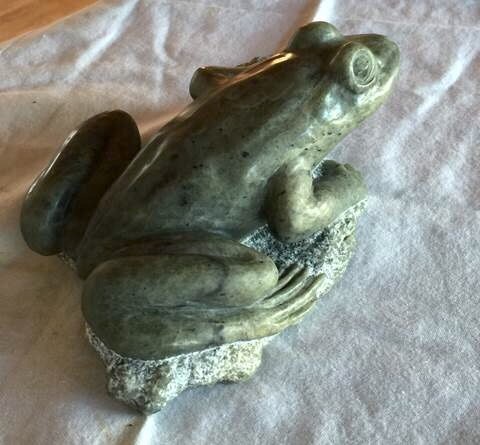
I don’t have a favorite stone, but I’m currently in a serious courtship with Olivene, better known to most of you as “dunite”.
The stone, as found at the top of the Cascade Mountains by Mount Baker in Washington, is a tan orange on the outside and anywhere from a lime green with veins of deep blue green to an almost solid dark green. If found in the rivers and streams surrounding the sisters either side of Mt Baker, WA, they are light tan with that same green interiors. See collection of river cobbles and big pieces from quarry.
Olivene has a coarse hexagonal crystalline structure (1/16”-1/8”) with a preference to fracture along hexagonal planes. You can see these forms and fractures occurring in the outcroppings and when you attempt to bust apart a river cobble. In collection photo above you can see the difference between the rounded river cobbles and the orange tan quarry stone. Below is photo of one of the pieces from the south peak of the sisters and the inside of a 10 inch river cobble whose rind was cleaved off (note shoe for scale).
Olivene works well with pneumatic tools (bushing and chiseling) for gross shaping, but the tools of choice for final work will be spinning diamonds. Sintered tools work well but electroplated do a nice job, last a long time, and are less expensive. It takes a high gloss reflective polish with diamond pads and/or paste.
It’s easy to pull figurative as well as abstract shapes from the stone and has the quality of being translucent when made thin. It’s the translucency that has my interest and causes me to think about forms and ways to get light through a piece.
